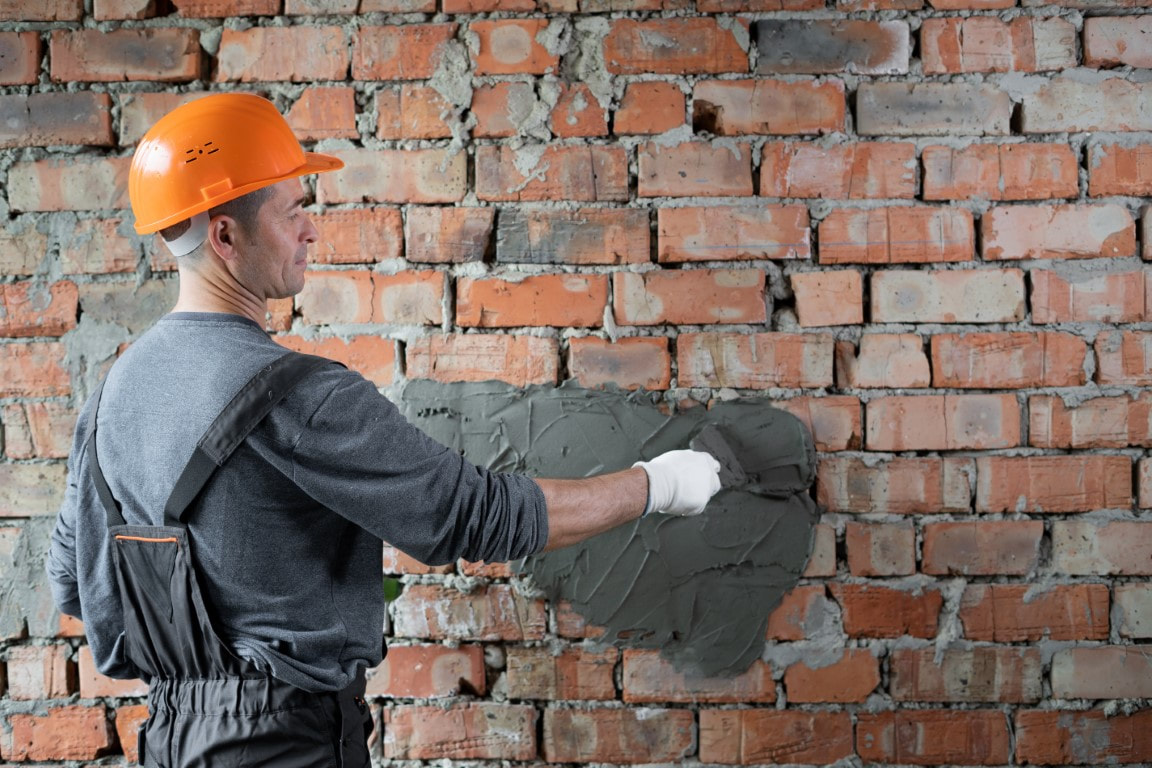Specialist Siding Contractor Services to Boost Visual Charm
Specialist Siding Contractor Services to Boost Visual Charm
Blog Article
Unlocking the Keys of Lasting Stonework Building And Construction Practices for Eco-Friendly Buildings
In the world of contemporary building and construction, the pursuit of lasting methods has come to be vital. Among the myriad approaches to green building, lasting stonework building and construction sticks out as a tried and true and long lasting technique that holds a wide range of untapped possibility. From the selection of materials to ingenious construction strategies, the tricks to accomplishing sustainability within masonry building and construction are complex and intriguing. By exploring the advantages, materials, strategies, and future trends of sustainable masonry, a much deeper understanding of how these practices can form the future of environment-friendly structures emerges.
Benefits of Lasting Stonework Building And Construction
Welcoming lasting stonework building and construction practices not just decreases environmental impact but likewise provides long-lasting financial benefits to building contractors and areas. By using products like recycled bricks, obstructs, and stones, building contractors can substantially decrease the carbon impact of their tasks while promoting source efficiency. In addition, sustainable masonry building techniques, such as correct insulation and thermal mass buildings, can enhance power performance within structures, bring about reduced functional costs gradually.
Furthermore, the longevity and durability of stonework structures contribute to long-lasting economic advantages. Buildings constructed making use of lasting masonry practices commonly call for less repair and maintenance, converting to cost savings for building contractors and property proprietors. The longevity of masonry products additionally guarantees that frameworks stay steady and safe, minimizing the requirement for regular improvements or substitutes.
Eco-Friendly Masonry Materials
Using environment-friendly masonry materials is a crucial action towards boosting the sustainability of building and construction methods and lessening ecological influence while optimizing long-term economic benefits. Lasting masonry products are sourced, produced, and made use of in a manner that reduces total environmental impact. Materials such as recycled bricks, reclaimed rock, and sustainable cinder block are coming to be increasingly preferred options for eco-conscious home builders. Recycled bricks, for instance, not just divert waste from garbage dumps yet also call for less energy to generate compared to new blocks. Redeemed rock provides a distinct visual allure while decreasing the demand for new quarrying. Sustainable concrete blocks incorporate recycled accumulations and might feature improved insulation residential properties, contributing to power effectiveness in structures.
In addition, all-natural products like adobe, rammed earth, and straw bundles offer outstanding thermal mass residential or commercial properties, minimizing the need for home heating and cooling down power. These products are often locally readily available, promoting regional economic situations and minimizing transportation-related carbon emissions. By selecting environment-friendly stonework materials, construction tasks can significantly decrease their environmental footprint and add to the production of healthier, more lasting developed settings.
Energy-Efficient Stonework Techniques
Energy efficiency plays an essential function in improving the sustainability of masonry building methods. By applying energy-efficient stonework techniques, contractors can dramatically decrease the total energy intake of a building, resulting in lower functional prices and a smaller sized ecological footprint. One essential energy-efficient stonework method is using thermal mass, which entails including thick materials like concrete or brick into the structure's structure to take in and save heat. This helps regulate indoor temperatures, lowering the need for mechanical home heating and cooling down systems.

Advancements in Sustainable Stonework
Recent developments in lasting masonry techniques have caused innovative strategies that are reshaping the building and construction market. One such technology is the advancement of self-healing concrete, which utilizes germs embedded within the concrete to recover cracks autonomously. This development not only minimizes maintenance prices yet likewise improves the durability of stonework structures, contributing to their sustainability.
Another notable innovation is using recycled accumulations in stonework building - masonry contractor. By incorporating materials such as crushed ceramic waste or recycled glass into concrete you can try here mixes, home builders can reduce the environmental effect of building jobs while preserving architectural stability. This technique not only draws away waste from landfills yet likewise conserves natural deposits, making it a crucial innovation in lasting stonework building and construction
Furthermore, the combination of digital layout devices, such as Structure Information Modeling (BIM), is transforming the method stonework structures are prepared and built. BIM enables for even more precise computations, lowered product waste, and boosted energy performance, eventually leading to more sustainable structure practices. These advancements jointly indicate an appealing future for sustainable stonework construction in the period of eco-friendly structures.
Future Trends in Stonework Sustainability
With the innovative strides made in sustainable masonry methods, the future patterns in stonework sustainability are poised to additional revolutionize the construction sector. Among the vital patterns forming the future of stonework sustainability is the boosted combination of modern technology. Improvements such as Building Info Modeling (BIM) and online fact simulations are being utilized to enhance masonry building processes, resulting in lowered product waste and improved energy efficiency in buildings.
Additionally, the growth of novel sustainable materials is readied to play a considerable function in boosting the eco-friendliness of masonry construction. masonry contractor. Developments like self-healing concrete, recycled aggregates, and bio-based binders are acquiring grip for their ability to lessen ecological effect while maintaining architectural honesty

Conclusion
Finally, Get the facts sustainable masonry construction methods offer countless advantages for green buildings. By utilizing environmentally friendly materials and energy-efficient methods, stonework can add to a more lasting built atmosphere. Developments in lasting masonry are continuously being established to additionally enhance the environmental efficiency of structures. Looking towards the future, the fad of stonework sustainability is anticipated to grow, leading to even more ecologically pleasant and energy-efficient building practices in the years to come.
Report this page